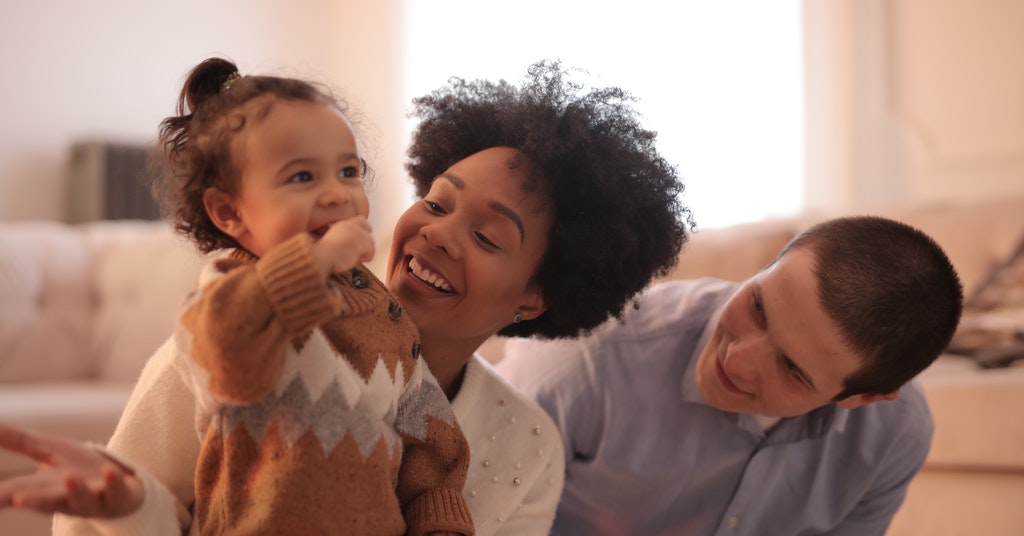
What I wish I had known about university accessibility as a student with hearing loss
August 15, 2019
These PowerPoint presentations make it easy to explain hearing loss at school
August 19, 2019Why parents should practice ‘serve and return’ conversations with their children

As a mom of a daughter with hearing loss, I know that the importance of conversation is crucial to her development. The question is, what exactly qualifies as a conversation? What should the conversations with my children look like?
My neighbor pulled me aside earlier this summer and she told me that my 7-year-old is going on 27. The neighbor recalled a recent conversation the two had together about the recent passing of our dog. She told me my daughter had the most interesting and well-thought-out ideas, and gave the neighbor time to reflect and respond in the conversation. “I don’t know many people my age,” my neighbor chuckled, “who can converse as maturely as she does.”
Now, my neighbor doesn’t have the knowledge that I do about how difficult it can be for children with hearing loss to develop these skills. So, her statement to me about Lucy nestled right in the warm-fuzzy spot in my heart. My neighbor doesn’t know that many children with hearing loss have a hard time with abstract and mental state worlds (think: emotions and thoughts). Yet somehow, my daughter with mild to moderate hearing was wondering if my neighbor has ever felt sad about losing a pet.
“…many children with hearing loss have a hard time with abstract and mental state worlds”
These deficits in children with hearing loss can happen because they don’t have the same access to the quantity and quality of conversational inputs as their normal-hearing peers do. They can miss out on key learnings because they cannot overhear other people’s conversations. For example, older siblings may squabble over a problem, and in their own clumsy way tell each other how the other’s actions made them feel. The common moments in a family home let a little one learn from others. They exemplify how to ask questions, wait for answers and then ultimately realize other people think and feel differently than each other. And kids who don’t have well fit hearing technology might miss out on eavesdropping on this situation.
As parents, we can be sure our kids have access to clear, rich sounds all day by using hearing assistive technology to overcome these barriers (think: Roger microphones or frequency lowering features in the hearing aids). And it’s our job to be sure they’re using these devices all day long.
But there are other, non-technology based ways we can use. We can make it a point to be sure our children are active participants in conversations. There is some great new research out of Harvard about how back and forth conversations build a child’s brain. This is true for all kids, not just those with hearing loss.
“We can make it a point to be sure our children are active participants in conversations.”
How we do this as parents will change as the child grows and evolves?
Conversations with babies

“Look around, little one, how many people can we see?”
My baby frequently babbled something in reply.
“Good, love! I see five people too. One, Two, Three, Four, Five.” I’d count, as I discretely pointed to the nearby people. “Oh no, do you see someone who is sad?”
I’d wait until the baby spots the sad kiddo who just scraped her knee.
“You see her, yes.” I’d say, as if my child just verbally answered my question. “Why do you think she is sad? It looks like she just hurt her knee. Ouch. And she wants daddy to come kiss it. Remember yesterday, when you got hurt and daddy picked you up?”
“Daddy,” my little one replies.
This is such a benign example. But I would try for things like this regularly. It is a nice example of what the Harvard study explains. The babble or gaze of my baby is one part of the conversation, and then by sharing the focus with my child I could name what was going on in the environment.
We regularly had on-looker moments like that, where I tried to not only help the child zero in on a critical social exchange between others, but where we can engage them to start mentally processing some of their own life situations to find similarities and differences with other people. I tried to simplify all of life’s moments into bite-sized child back and forth exchanges.
Toddlers / Pre-Schoolers
It’s a little easier with toddlers, especially because their growing minds seem to always invite a conversation by first asking “Why?” I’m a bit of a nerd. So if my toddlers asked about the human circulatory system, gravity, or the general theories of world religion – I would indulge the “Why?”
And as in the example of the baby, I found my kids do better when my answers come in the form of back and forth conversations. My son recently asked me, “Why don’t rock’s bleed?” This is an actual conversation I had with my 3-year-old boy. While he has normal hearing, Harvard’s study tells me that he equally benefits from this back-and-forth approach.
Clay: “Why don’t rocks bleed?”
Me: “Are rocks alive, buddy?”
Clay: “No, they don’t ever move.”
Me: “That’s right, son. And do you move?”
Clay: “Oh yes! I have 10 fingers and run so fast.”
Me: “You are so fast, and the blood in your body travels all the way from your heart to out your 10 fingers – then back to your heart – and then down to your powerful feet.”
Clay: “Momma, my heart goes bump-bump, bump-bump,” he says as he moves his hand to imitate the beating.
Me: “Right, buddy! Your heart pumps to get the blood to the far-away places in your body.”
Clay: “But why do I have blood?”
Me: “The blood is how your body gets all the things it needs to be so fast and so strong.”
Now I’m no biology expert – but I do know a skosh more than my kids do. So rather than brush off these moments of intrigue, I try to give my kids a few new words, expose them to new concepts, and help them find their place in this big crazy world. And honestly, most of this stuff happens walking into day-care or driving to the grocery store. These simple little opportunities are the stuff of childhood, and in a way, that makes sense to you and your family, building more back-and-forth conversations in may mean a few years down the line, you’re deeply gratified by a simple comment from a neighbor like I was.
Read more: This airplane game makes speech learning fun
Additional resources
‘Serve and return’ conversations are a great way to engage in conversation with your child, to help develop their language skills and foster the relationship between the two of you. Even if your child is young, they can benefit from these interactions, as this video, which went viral, shows:
If you’re interested in the research behind the concept of “serve and return” conversations, check out these resources:
Do you want to learn more about when and how children start developing the ability to think about life from another’s perspective? This parenting podcast is gold. Honestly, it was a mind-blowing episode for me. I’ve made a few changes in my thoughts and actions as a result. Check it out.
How do you practice back and forth conversations with your children?




